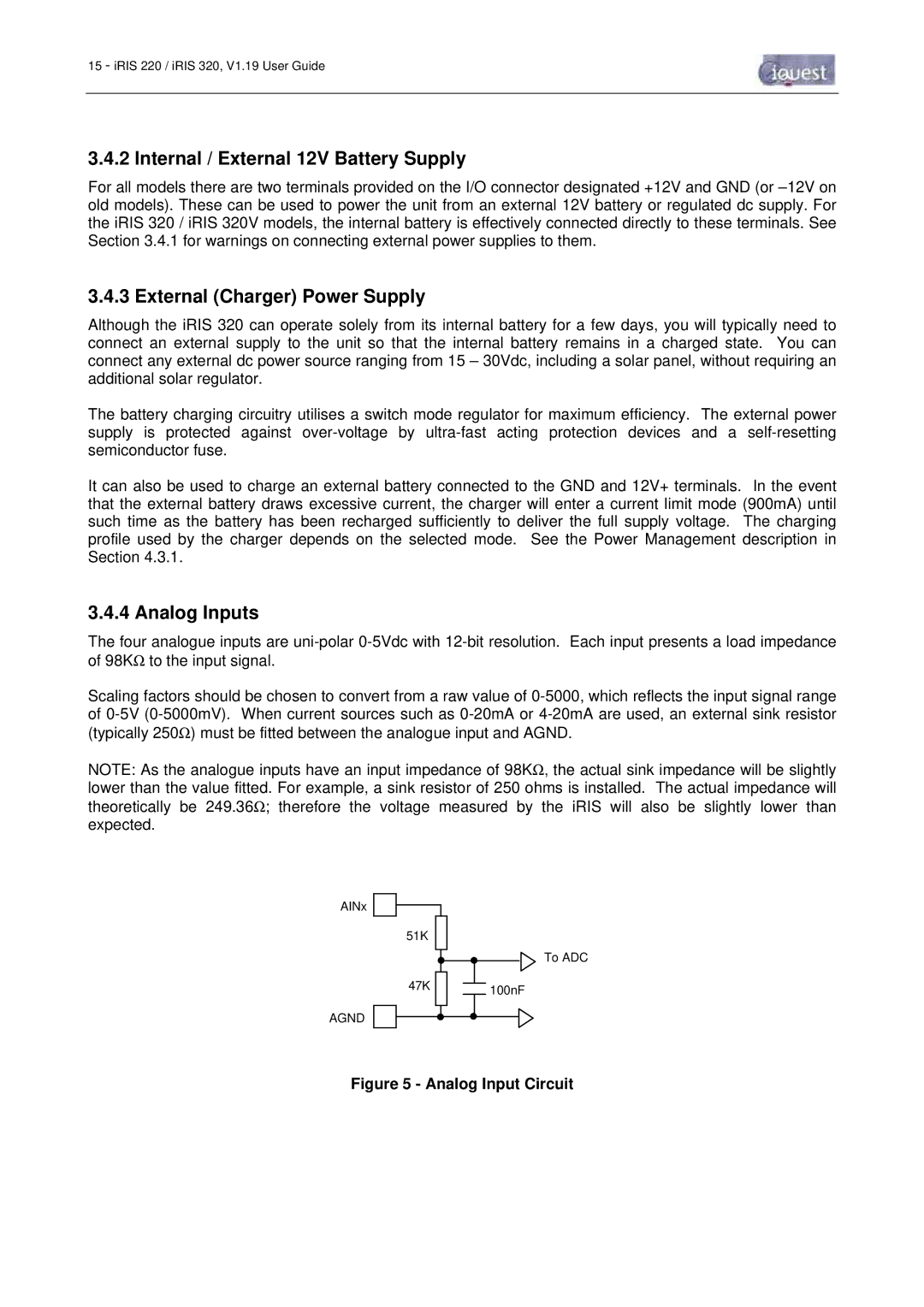
15 - iRIS 220 / iRIS 320, V1.19 User Guide
3.4.2 Internal / External 12V Battery Supply
For all models there are two terminals provided on the I/O connector designated +12V and GND (or
3.4.3 External (Charger) Power Supply
Although the iRIS 320 can operate solely from its internal battery for a few days, you will typically need to connect an external supply to the unit so that the internal battery remains in a charged state. You can connect any external dc power source ranging from 15 – 30Vdc, including a solar panel, without requiring an additional solar regulator.
The battery charging circuitry utilises a switch mode regulator for maximum efficiency. The external power supply is protected against
It can also be used to charge an external battery connected to the GND and 12V+ terminals. In the event that the external battery draws excessive current, the charger will enter a current limit mode (900mA) until such time as the battery has been recharged sufficiently to deliver the full supply voltage. The charging profile used by the charger depends on the selected mode. See the Power Management description in Section 4.3.1.
3.4.4 Analog Inputs
The four analogue inputs are
Scaling factors should be chosen to convert from a raw value of
NOTE: As the analogue inputs have an input impedance of 98KΩ, the actual sink impedance will be slightly lower than the value fitted. For example, a sink resistor of 250 ohms is installed. The actual impedance will theoretically be 249.36Ω; therefore the voltage measured by the iRIS will also be slightly lower than expected.
AINx
51K
47K
To ADC
100nF
AGND
